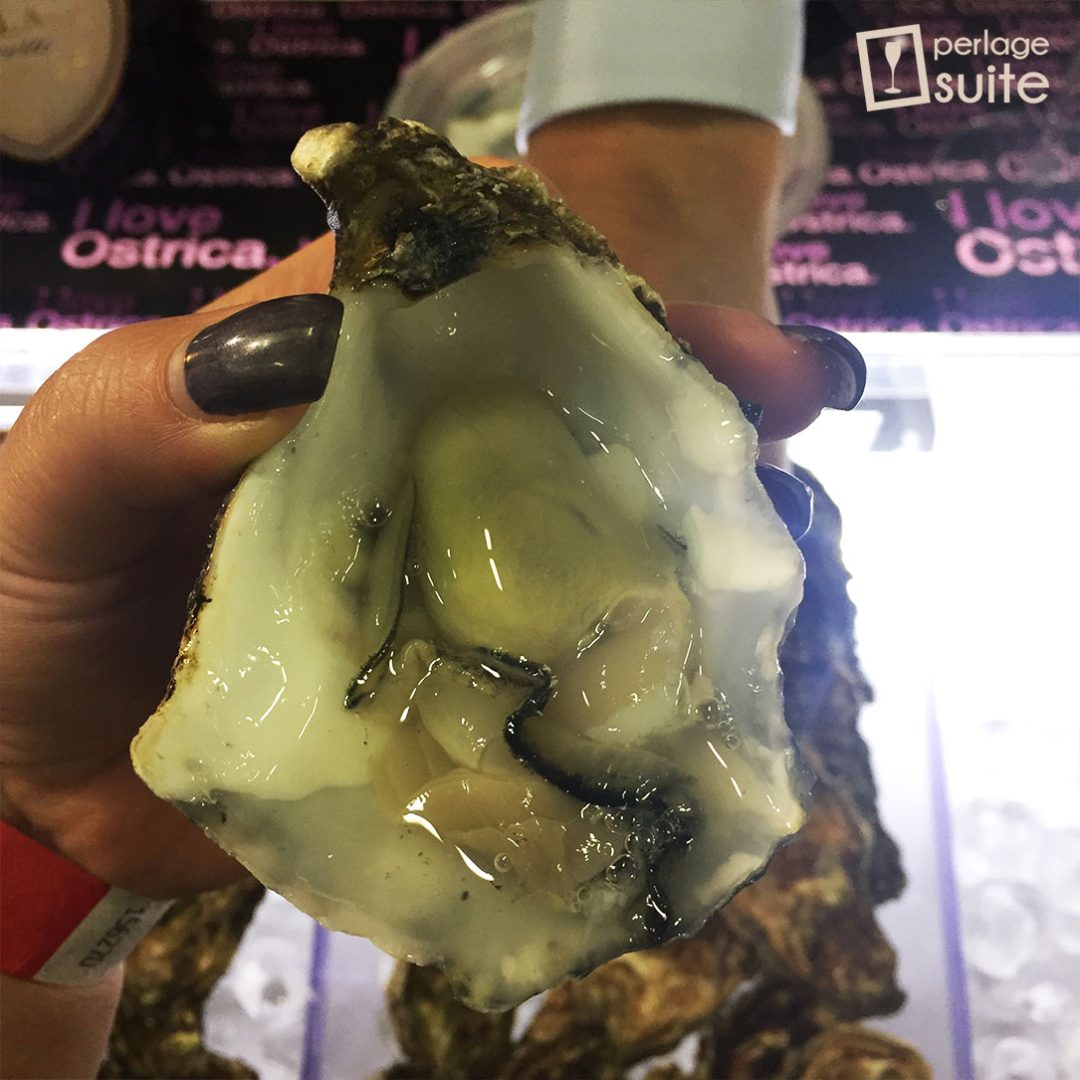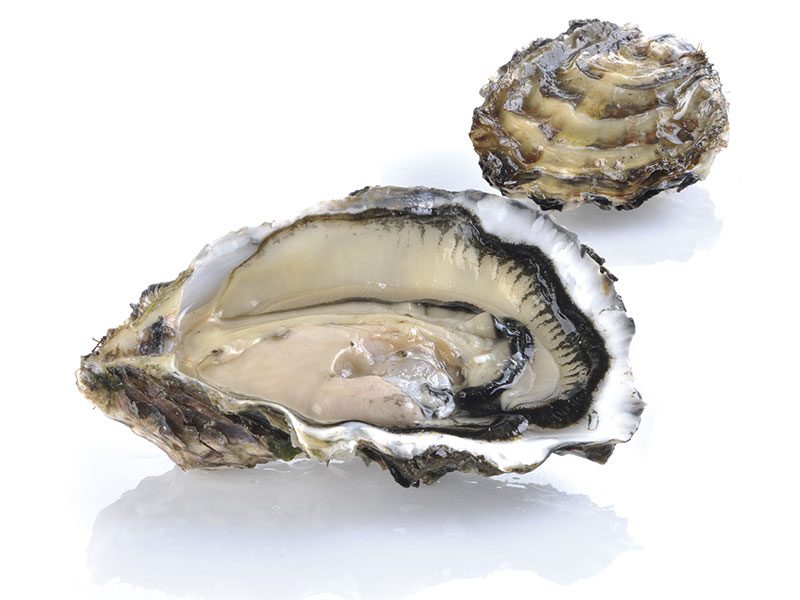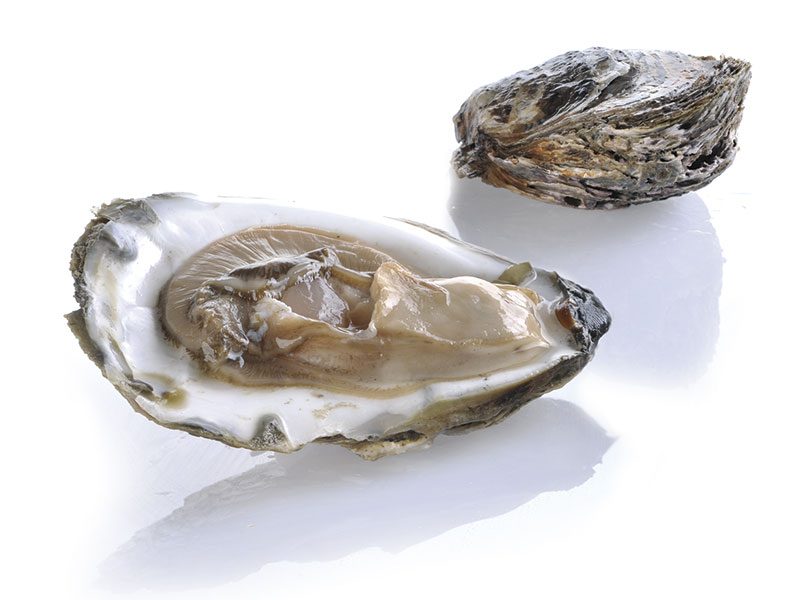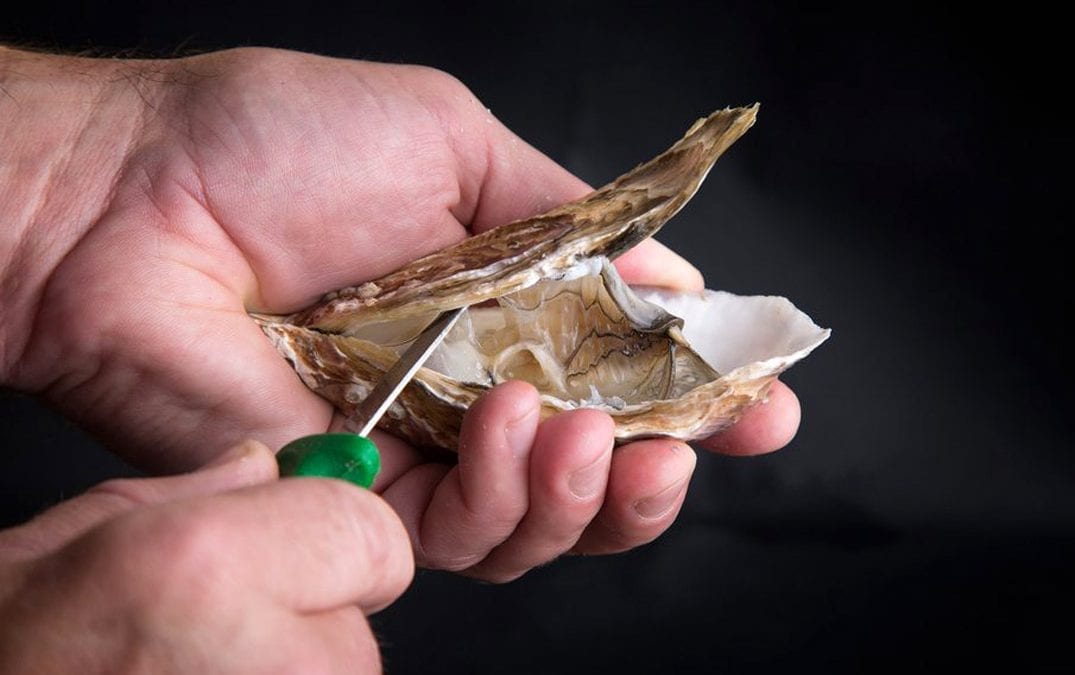Today I have tried to encapsulate in one post everything I know about oysters, a food I adore above all else, and I thank you so much I Love Oyster for providing me with a really well-done brochure from which I drew some of this information. Ah, the I love Oyster format is really interesting and I suggest you look into it in my article dedicated to GourmArte 2016 or directly on their website.
.
L'oysteror ostrea, is a bivalve mollusc with a rounded shell covered in scaly lamellae. The two valves are unequal and the animal is anchored to the lower one, which is larger and more hollow than the upper one. The mollusc has a rounded body and the edges of the two mantle flaps are fringed. The common oyster, Ostrea edulis, lives in all the seas of Europe at shallow depths, clinging to rocks. Actually, the most common oyster is the Pacific Oyster, i.e. the Crassostrea Gigas native to Japan. Oysters are also famous for producing beautiful pearls, but these pearl oysters live in the Pacific Ocean.
The history of oysters
The oyster appeared on Earth millions of years ago, so much so that a valuable specimen with a 10-million-year-old pearl has been found. The Chinese were the first to breed oysters, but the Greeks loved them so much and consumed them 'industrially' that they used the shells for voting. Even for the ancient Romans, a banquet without oysters was inconceivable. The consumption of oysters fell into disuse during the Middle Ages, only to return during the Renaissance. This is actually not surprising: the type and manner in which food is consumed is a cultural matter and, as we know, the Middle Ages were the scene of a decline in culture itself. Napoleon, on 4 July 1853, drew up a regulation on coastal sea fishing that created real legislation concerning the oyster and was the first act to safeguard the species. In the second half of the 19th century, the French government encouraged the importation of oysters in order to create the first farms, and around 1970, the first raised cultures appeared in France, allowing more oysters to be farmed.
Oyster production areas
The world's most important producers of oysters are China, Japan and Korea, and in Europe, only France produces large quantities. There are 7 basins in France: Normandy, North and South Brittany, Atlantic Loire, Marennes-Oleron, Arcachon and Mediterranean.
Oyster species and the Belon
Oysters are essentially divided into two species, the Flat oyster and the Concava (more common). Anyone who loves oysters will have heard of the Belon oyster, often confused with the Flat.
The calibre of oysters
The oyster is measured in gauges, defined in relation to the weight of the oyster.
 Concave Oysters
Concave Oysters
The calibre ranges from 5 (the smallest and least valuable) to 0 (the largest and most valuable).
- 5-gauge: oyster weighing between 30 and 45 grams;
- Size 4: oyster weighing between 46 and 65 grams;
- Size 3: oyster weighing between 66 and 85 grams;
- Size 2: oyster weighing between 86 and 120 grams;
- Size 1: oyster weighing between 120 and 150 grams;
- size 0: oyster weighing more than 150 grams.
 Flat Oysters
Flat Oysters
The calibre ranges from 5 (smallest and least valuable) to 0 (largest and most valuable). Then there are the special calibres ranging from 00 to 000.
- 5-gauge: oyster weighing between 30 and 40 grams;
- Size 4: oyster weighing between 40 and 50 grams;
- Size 3: oyster weighing between 50 and 60 grams;
- Size 2: oyster weighing between 60 and 70 grams;
- Size 1: oyster weighing between 70 and 80 grams;
- size 0: oyster weighing between 80 and 90 grams;
- 00-gauge: oyster weighing between 90 and 100 grams;
- 000-calibre: oyster weighing between 100 and 140 grams.
Ostriculture
Oyster farming can last up to five years and develops in four stages:
- CAPTION - occurs when the oysters lay eggs (3 times a year) and the oyster farmer intervenes by preparing the collectors where the oysters at the embryonic stage will find support. This phase lasts about 3 weeks and during the fixing stage the larva takes on the name of oyster larva.
- DISTACTION - takes place about 18 months after harvesting. For at least three months, the farmer spends hours detaching and sorting the small oysters.
- BREEDING - occurs after detachment. At this stage, the oyster grows free of attachment points and the oyster farmer takes care of each individual oyster and gets an idea of the yield to come and the destination of the different oysters. Depending on the fleshiness, there will be Fines (Fini), Speciales (Specials) or Pousses en claires (Basin-grown). Breeding lasts between one and two years and can be flat, elevated or suspended.
- REFINING
Sustainable breeding
One thing that makes me, a devourer and oyster enthusiast, very happy is that its breeding is the most sustainable in the world, so much so that it is even bred in nature reserves. The oysters filter up to 220 litres of water per day, improving its quality for the proliferation of other species. Moreover, there is no need to feed them either, as natural currents and the flow of rivers have everything they need.
How to recognise a fresh oyster?
Open oysters are to be discarded a priori because they are already dead. Oysters that once opened do not contain much liquid and have the flesh starting to stick to the sides of the shell have been out of the water too long. These are only to be eaten cooked. Fresh oysters are alive and, if opened properly, they come off the valve and have a good supply of liquid.
Since oysters are shellfish that are eaten raw and alive, it is essential to choose a safe source of supply! Eating contaminated raw oysters puts us at risk of viral hepatitis, cholera, gastroenteritis... A good tip to recognise a healthy oyster is to look at it and smell it: if it is closed well and if the shell has a good sea scent then it is almost certainly a fresh and healthy oyster!
Organoleptic differences between oysters
Just as grape varieties have a terroir that gives them different organoleptic characters, the same is true for oysters, which can be said to have a 'merroir'. The same species can in fact look, smell and taste completely different depending on the nutrients and the density of these in the water, the currents and the natural surroundings.
Serving temperature of oysters and tasting tips
The ideal temperature for eating oysters is between 6 and 8 °C to bring out all the organoleptic characteristics. The best way to taste oysters is to sip the salty liquid inside and then take the oyster between the lips and chew it slowly, making sure to pass it over all the corners of the tongue to receive the different tactile sensations. Personally, I am for always tasting them pure combined with a Metodo Classico bubbly.
I recommend three matching wines:
- Zero Zero Franciacorta DOCG Riccafana
- Extra Age Brut Champagne Lanson
- Comitissa Gold 2002 Alto Adige Brut Gran Riserva Lorenz Martini
And from a nutritional point of view?
If I haven't convinced you yet to love oysters, I'll give you another pearl: oysters have very few calories and very little fat, and they have lots of potassium, calcium, iron, phosphorus, and vitamins A, B1, B2, C, E, PP. Unfortunately, however, they do have some cholesterol and a lot of sodium, which is why you should not overdo it if you have high cholesterol or high blood pressure.
But are oysters really aphrodisiacs?
Even Casanova used oysters as a means of seduction during his encounters, but is there really a reason why they are considered an aphrodisiac food?
"By pure chance, an oyster I was about to put in Emilia's mouth slipped out of its shell and fell on her breast. The girl made the gesture of picking it up with her fingers, but I prevented her, claiming the right to unbutton her bodice to pick it up with my lips at the bottom where it had fallen..."
Casanova
Oysters contain a high percentage of zinc, which significantly increases the amount of hormones and testosterone in favour of more rewarding sexual performance but also improved fertility for both men and women. Zinc, in fact, plays a fundamental role in the production of spermatozoa and testosterone in men and ovulation in women. They also contain a number of amino acids that increase hormone secretion and promote the release of serotonin (the feel-good hormone). Personally, I think that more than increasing sexual desire, they provide a kind of fun that makes us lower our defences and relax... and one thing leads to another!
Curiosities
There is also an oyster concept defined in Verga's novella 'I Malavoglia' which is based on the idea that the weak must protect family values and tradition to prevent the world, the 'voracious fish', from devouring them. In practice, the poor people find security from the environment of their birth and respect for their family's values and traditions. Put like that, it sounds like a nice concept, but in reality it is not at all so. Verga states in fact that The problem arises when the poor/weak begin to feel the desire for change, the desire to improve, to progress. Just as the oyster lives securely as long as it clings to the rock where it was born, so Verga's man lives securely until he begins to have cravings for improvement. Since I always hope that every individual continuously seeks to improve his condition, to progress and evolve, I consider the concept of the oyster negative. As much as it is fundamental to love the place where we grew up and respect the traditions of our family, these cannot be the excuse for not evolving.
I hope you enjoyed this article...
See you soon
Chiara
Ah, I'll point out some items from my oyster-themed Christmas wishlist for sale on Amazon:
-
Pradel Jean Dubost oyster knife 10629very convenient with its wooden cutting board that saves you from cutting your hands... for 15 €!
- Claude Dozorme oyster setI love this brand, they also make beautiful sabres...! A beautiful Christmas present for €55!
-
Guy Degrenne 206325 - Set of 6 oyster forksbeautiful and designer, comfortable to help with tasting! 22 €
And lastly, a little gift that is not for tasting oysters, but given the title I mention it for all my oyster-loving readers Tim Burton:
- Melancholic death of the oyster child and other storiesI read it in the original language, but even in Italian, even if it loses its rhythm a little, it is still fascinating!
If you know of any reputable oyster sellers, please tell me about them in a comment! Thank you very much!


